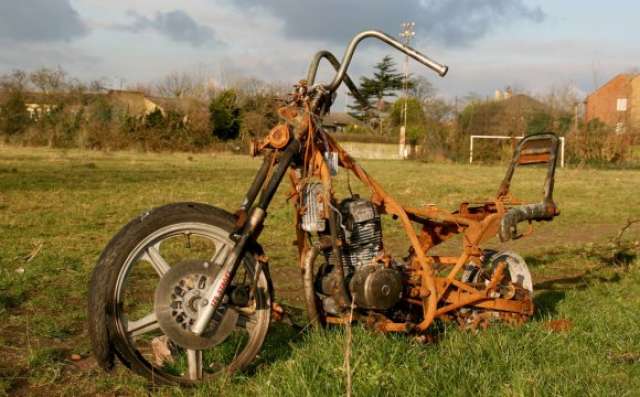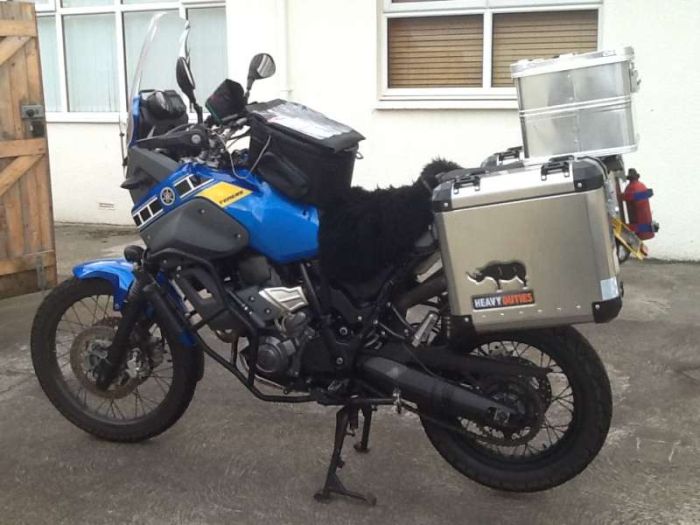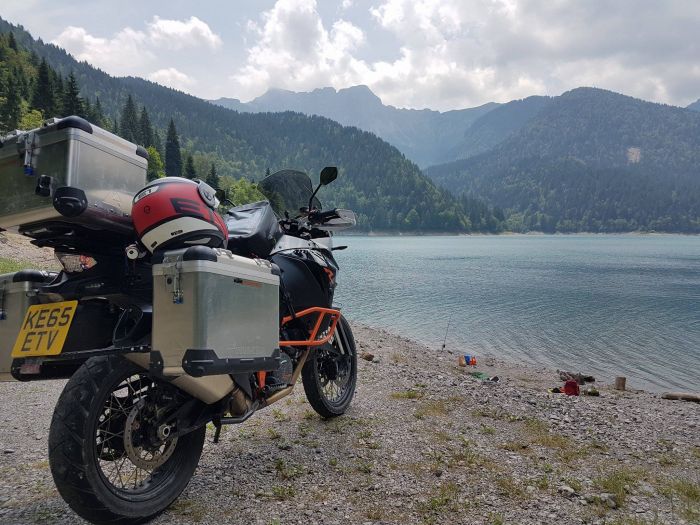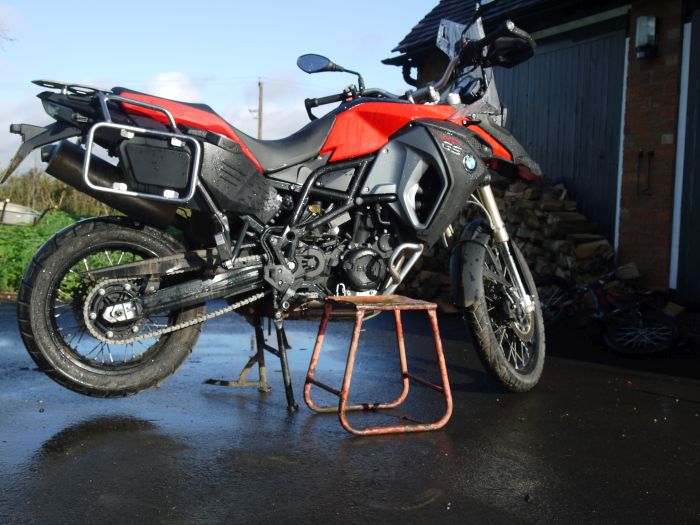When it comes to causing high stress levels and even potential heart failure, selling a bike comes third only behind moving house and getting divorced (although, ironically, both of those circumstances sometimes end up with us buying a bike, instead – every cloud, etc).
Anyway, how quick and easy your bike sale is comes partly down to luck, but can be helped immeasurably by sticking with a few simple, basic rules. If you choose to ignore them you may still shift your bike at your asking price within a matter of days. But you might not. And why make it harder for yourself? A little bit of effort beforehand saves time, and can make you money.
1. Poor adverts
Everyone loves browsing the small ads looking at other people’s bikes for sale. It’s partly a critique of other people’s bad taste – “Really? Purple bolts and a tinted screen!?” – but each one is also a little thought experiment: how would a KTM 1290 Super Adventure look in my garage instead of the GS? What is a Ducati Multistrada Enduro really like? Do I really fancy an XT660Z as a second bike, or should I go for a V-Strom?
Putting yourself in the shoes of a buyer is good advice when it comes to your own advert. Ask yourself, what would make you come and buy your bike, and compose your advert accordingly.
Good photos are vital. Pictures tell a thousand words – but only when they’re sharp, well-composed, well-lit and there are plenty of them. Nothing says “I don’t care about you, I certainly don’t care about selling you my bike, and I probably don’t care much about looking after it either,” better than a couple of smudgy, grey, out-of-focus snaps. There’s no excuse, with digital cameras, not to put some time and effort into making a bike look amazing – in fact, digital photography is really good at making ropey bikes look much better than they actually are – worth remembering when, as a buyer, you can’t believe the £1,200 R1100GS for sale 200 miles away looks so clean in the photos. But that’s exactly the feeling you, as a seller, want to be generating in other people.
Writing a good advert is also important. Not everyone is William Shakespeare, but you don’t need to be. In fact being too clever can put buyers off, no-one likes a smart-arse. But equally, you’re looking to ‘sell’ your bike, make it sound attractive to buyers – and while that doesn’t mean being dishonest, it does help if you understand the power of words and how to arrange them in the right order to achieve the desired effect.
So, get your spelling right (and use a dictionary if you can’t). Get the punctuation and grammar right. Don’t use Caps Lock. Don’t use Comic Sans fonts. Be polite, many people load their advert with stern conditions (“Don’t ask if there’s a Buy It Now price because if I wanted to add one I would have done, so don’t waste my time… etc”) to the point it’s almost rude. When I read adverts like that, I immediately assume the seller is a jerk and can sod off; I don’t care how nice his bike it, he’s not getting my money.
So, be persuasive. Be precise. Say what the bike is, give the details, describe its condition, list any salient extras, state the conditions of the sale, and end with thanks for looking. Being polite is massively helpful.

Not the image you want to use of your bike
2. When and where
Back in the good old days the best place to sell your bike was MCN’s classifieds or the back pages of your local paper, and that was pretty much it. Today, obviously, there are heaps of online sites and it’s hard to know which is best, and cheapest. Gumtree? eBay? Autotrader? Facebook? Park your bike on the lawn and stick a placard on it?
Certainly there’s nothing wrong with parking the bike at the top of your drive, although you might want to chain it down and keep your garage locked. And bear in mind it’s not just advertising your bike, it’s advertising where it’s kept at night.
Gumtree is free, but it has a reputation for being low-rent; if you can’t be bothered to pay to sell your bike, it must be a pile of scrap, right? Social media is worth a try – you can usually find a group for local sales and also specific to the kind of bike you’re selling. There are any number of adventure bike forums to try (the ABR forum is a great place to buy and sell bikes); but remember some places don’t encourage For Sale posts. Abide by the rules.
EBay is a good choice; you’ll need to work out if you want an auction or just a classified, and then get round eBay’s seller fees (which can be steep). However, be prepared for time-wasters. they’re an inevitable risk, but try to stay patient and don’t start using red typefaces to cover your ad with warnings about it. Just swallow it and move on.

Photo: Boatman (ABR Forum)
3. Doing the deal
Personally, I’d deal with hard currency only because it seems like there are any number of scams and rip-offs – and who has the time to become a fraud expert? Some sellers are okay with bank-to-bank transfers, but the bottom line is, obviously, the bike doesn’t go anywhere until the deal is done. And, just as obviously, cheques are a no-no. Does anyone even use a chequebook these days?
And, clearly, until there’s cash in hand, no-one gets a test ride. That’s the law of buying and most people understand it’s how it works. Never accept the keys to other cars or other bikes as security for a test ride; they could just as easily be stolen.
Remember that haggling is part of the deal. The buyer knows it, and you should too – so price your bike accordingly. There’s absolutely no point in running an auction on eBay and then being surprised when the buyer turns up and decides he doesn’t want to pay the final price. What did you think would happen? And of course you don’t have to sell the bike to him and you’re perfectly justified in telling him that’s the agreed sum and that’s what he has to pay or face a drive back home with no bike. But, equally, if you’d built that into your start price on eBay, you could say you should’ve seen it coming – even if you’d already stated in your advert the final bid is the final price.
But, and call me suspicious, I would be very wary of someone accepting the final auction price, coming to see the bike, then being all coy and unwilling to pay it when he actually turns up at your house – especially if he’s come some distance and your advert was clear, honest and accurate. Do not let him into your house, let him see inside your garage, or get any hint you won’t come at him with an iron bar if he comes back later with some bolt croppers.
Think carefully before having anything to do with selling overseas. Having said that, post-Brexit and with a weak pound, used UK bikes are suddenly looking better value to continental buyers – we aren’t quite yet at the point we were in 2009, when European traders were coming over here with vans to buy up second-hand GSs and ship them to the continent en mass. But it might not be too far off.

4. Don’t give out information
Don’t give out VIN numbers and V5 details over the phone or via email – someone could be trying to clone your bike. Some folk cover their number plates up in classified ads too; as a buyer, to me that looks a little bit too much like paranoia on the seller’s part.
5. Sell off site
This is a tough one, and it’s easy to lose a sale because you’re paranoid about letting unknown agents know where you live. Sometimes, if you’ll only meet up at a garage or a car park, the buyer may well lose confidence and pull out because it sounds a bit shady.
The best solution is have the bike out of the garage, cleaned and ready to go, with no reason to go back into the garage. And keep the doors closed and locked, so no-one gets a sneaky peek at the priceless classic you’ve got in there.
6. Sweeteners
What extras can you sweeten the deal with? There’s nothing wrong with selling your bike with a box of spares, although it might be best to avoid showing your potential buyer a bucket of fried clutch plates, various gaskets, half-used brake pads and a well-thumbed service manual.
But don’t forget to include any bike-specific extras you no longer need – part-worn tyres, bespoke paddock stands or, if your bike is vaguely classic, any branded material like branded hats, paddock jackets etc.
In terms of modifications, some are worse than others. But, as a rule, mods won’t increase the value of a bike unless they’re a) luggage or b) factory. So you might think your trick aftermarket suspension adds value; some buyers will see it as a potential problem.
This is especially true of the growing market in nouveaux classics – stuff from the 1990s – because people want stock bikes, not a blinged-up parts catalogue that will take ages to get back to standard. If your bike has wavy discs, six-pot aftermarket calipers, a tinted double bubble, Pazzo levers, crash bungs, a sawn-off end can, a purple Pro-Bolt kit and a massive Union Jack tank pad, chances are it will be worth less than if it had none of those items.
If you can get the bike as close to standard, do it. And you might actually make more money if you sell the parts separately.

Including luggage can increase the value of your bike
7. Clean up
This is obvious and, if you need reminding, it means you’re probably not going to bother. But here goes:
Make sure your bike is clean – and not just recently hosed down and still dripping (wet bikes in photos are a real turn-off), but actually sorted out days before, dried off, and polished. Remove stickers, tidy up any loose fittings or panel bolts, polish everything so you can eat your dinner off it.
Clean tyres too. The things people check, sometimes unconsciously, are the little things that speak volumes about the care you’ve put into owning the bike – is the chain actually clean or just freshly coated in lube, on top of the rust? I always look at the back of the swingarm, around the rear suspension linkage for grime and dirt – if the owner has kept the hard-to-get-at places clean, he gives a damn.

A dripping bike doesn’t make for the best pre-sale photos
8. Test ride
Not the buyer; you, the seller. Go for a pre-sale test ride – just to make sure the bike works as you’ve advertised it. It’s amazing how many batteries suddenly go flat, HT leads break down, engines only run on three (if it’s a four), and misfires or snapped cables will manifest themselves the night before the sale. It doesn’t look too clever if the buyer pushes the bike with the brakes on and the pads fall out.
9. Paperwork
Silly little things matter and can make a difference – have you got a copy of a magazine with the original road test of the bike? Or a sales brochure? Genuine buyers love a bit of history with their new bike; I’d stop short of offering your holiday snaps, but if the bike has any provenance or recorded history beyond the obvious MoT, V5 and service records, dig it out from the attic and chuck it on the seat when the buyer turns up. Yes, even that 1994 calendar.
10. If you really can’t be bothered
Try a dealer – there are a couple of reasons why this is a good idea: firstly, if you’re self-employed you’ll be well aware that time really is money. Selling a bike through a dealer means he takes a chunk of the proceeds – but if you add up the time you spend taking care of the above: cleaning and prepping the bike, photographing and writing the ad, placing the ad, cost of placing the ad, dealing with time-wasters, arranging to meet genuine buyers, meeting a genuine buyer, genuine buyer thinking it over, genuine buyer pulling out, re-advertising the bike… see what I mean? Measured in pounds, shillings and pence, it could cost you more than you’d lose by selling to, or through, a dealer.
And the second reason is convenience. Even if you aren’t worried about the time and cost of selling a bike privately, it’s still often a massive pain in the ass. Life is too short.
These are the thoughts of the team at www.wewantyourmotorbike.com who pride themselves on a honest no haggle policy. 9.8 on trust pilot, all reviews verified.


